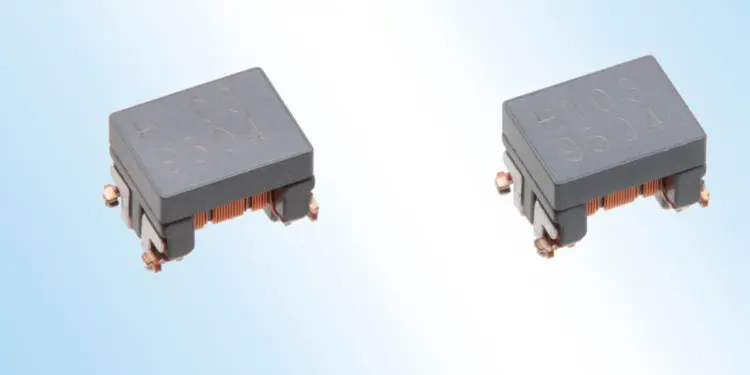TDK Corporation presents the ACT1210G-800-2P, a new type of common-mode choke that conforms to the standards of the OPEN Alliance (One-Pair Ether-Net) for 1000BASE-T1.
Thanks to the high values of the S-parameters, a high amplitude ratio is created between differential and common-mode levels – a decisive factor for signal integrity in the automotive Ethernet. The common mode inductance at 100 kHz is 80 µH, and the maximum permissible current is 70 mA. Volume production began in May 2020.
Thanks to a metal frame for the connecting electrodes, the choke offers excellent thermal behavior, enabling it to be used within a wide temperature range from -40 °C to +125 °C. The new component is manufactured in a highly automated and extremely precise winding process which achieves high reliability and minimal scatter of the electrical parameters.
One particular feature is the compact size, with measurements of just 3.2 x 2.5 x 2.4 mm, significantly less than those of CAN-Bus or FlexRay chokes. This means that the new choke can be used, for example, in automotive camera systems featuring an ever-increasing packing density of components.
TDK will extend the permissible temperature range of its common-mode chokes and expand the product portfolio, including the products for high-speed communication so that it can serve even more automotive applications.
Main applications
- Automotive Ethernet based on 1000BASE-T1
Main features and benefits
- Compliant with standards of the OPEN Alliance for automotive Ethernet 1000BASE-T1
- Wide temperature range from -40 °C to +125 °C thanks to a metal frame for the connecting electrodes
- High reliability and minimal scatter of the electrical parameters due to a highly automated and extremely precise winding process
- Qualified in accordance with AEC-Q200
Key data
| Type | Common-mode inductance at 100 kHz [μH] | DC impedance [Ω] | Insulation resistance [MΩ] | Rated current [mA] | Rated voltage [V] |
|---|---|---|---|---|---|
| ACT1210G-800-2P | 80 (+50/-30%) | 2.4 max. | 10 min. | 70 max. | 80 max. |
































